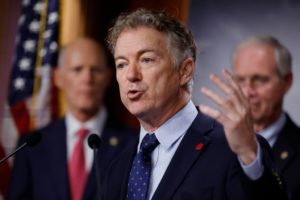The average salary for US government employees is north of $83,000, higher than the more than $51,000 folks in the private sector earn. Federal workers also receive plenty of generous taxpayer-funded perks and benefits, including the defined benefit pension plan. If life were not sweet enough being employed by Uncle Sam, roughly two million civil servants are poised for the most significant pay increase in two decades. At least taxpayers can take solace in the fact that President Joe Biden’s policies mean that these hikes are still below the annual inflation rate.
Paying Federal Workers More
 Biden signed an executive order on Dec. 23 that raised the annual pay rate for federal workers by an average of 4.6%, effective Jan. 1, 2023. Typically, this is under the purview of Congress, but since lawmakers did not specify an amount in the more than 4,000-page omnibus bill, the president did. This is the largest compensation increase since 2002 and will impact close to 2.2 million executive branch employees. But the amount will vary by local area, with the biggest jumps in pay happening in Seattle, WA, and in the Washington-Baltimore region: 5.15% and 4.86%, respectively. The smallest boost – 4.37% – will be applied to 48 cities that maintain their own rates.
Biden signed an executive order on Dec. 23 that raised the annual pay rate for federal workers by an average of 4.6%, effective Jan. 1, 2023. Typically, this is under the purview of Congress, but since lawmakers did not specify an amount in the more than 4,000-page omnibus bill, the president did. This is the largest compensation increase since 2002 and will impact close to 2.2 million executive branch employees. But the amount will vary by local area, with the biggest jumps in pay happening in Seattle, WA, and in the Washington-Baltimore region: 5.15% and 4.86%, respectively. The smallest boost – 4.37% – will be applied to 48 cities that maintain their own rates.
It should be noted that this pay hike is separate from the cost-of-living adjustment (COLA).
This comes after the US Office of Personnel Management (OPM) announced that approximately 32,000 federal workers will be redesignated to a higher pay locality for the fiscal year 2023. Officials say that they are “working to ensure locality pay is competitive in all communities across the country,” adding that the OPM will be working to “expand existing areas.”
The US government spends approximately $250 billion annually on a record 2.2-million-person workforce. It is no secret that federal employees are handsomely compensated. Over the years, it has been estimated that one of every five government workers makes a six-figure income, in addition to incredible vacation, sick leave, holidays, retirement policies, and other benefits. At the same time, many have questioned the exceptional compensation packages extended to bureaucrats, especially as Washington runs a trillion-dollar deficit and $31 trillion national debt and taxpayers endure a cost-of-living crisis.
There have been proposals to address these costs. The Heritage Foundation, for example, recently suggested eliminating Federal Employee Health Benefits (FEHB) retirement benefits for new hires, as it would generate savings of more than $41 billion during the fiscal year 2023-2032 period.
Meat and Potatoes in the States
Although compensation rates for federal workers are considered enormous, financial experts contend that the meat and potatoes are situated at the state and local levels.

Rand Paul (Photo by Chip Somodevilla/Getty Images)
For instance, in the great state of Pennsylvania, 14% of its nearly 12,800 state employees became members of the $100,000 Club in 2021, including the head of the state university system, a clerk-typist in the Department of Labor & Industry, and legislative leaders and their press secretaries. Or, in another egregious case, roughly 122,000 public employees in Illinois earned at least $100,000 in 2020, which gave taxpayers a $15.8 billion bill.
Progressives will assert that the government needs to offer higher salaries to attract the most competent employees. Has this been the case? In September, the Goldwater Institute put together a list of some of the most outrageous examples of government waste. City officials spent $20,000 on a trash can in San Francisco. The Washington Metropolitan Area Transit Authority approved about half-a-million bucks to maintain a self-cleaning toilet from 2003 to 2017, which had been out of service for years as of 2019.
And, of course, as Liberty Nation recently reported, Sen. Rand Paul’s (R-KY) 2022 Festivus Report highlighted billions of dollars in waste, whether it was watching ‘roided up hamsters fighting or studying if the Thanos villain from Avengers: Infinity War could snap his fingers in real life and destroy mankind.
A Lesson From Milton Friedman
Milton Friedman, one of the greatest economists in history (outside of monetary policy), famously created a blueprint of four different ways to spend funds, effectively lamenting on the nature of government. You can spend your own money on yourself or someone else, and you can spend somebody else’s money on yourself and somebody else. The Leviathan might be the perfect symbol of waste and inefficiency. Still, if there is one thing politicians, bureaucrats, and every tentacle of the Swamp monster do well, it is spending taxpayer dollars on themselves and others.
Do you have an opinion about this article? We’d love to hear it! If you send your comments to [email protected], we might even publish your edited remarks in our new feature, LN Readers Speak Out. Remember to include the URL of the article along with your name, city, and state.
Please respect our republishing guidelines. Republication permission does not equal site endorsement. Click here.

